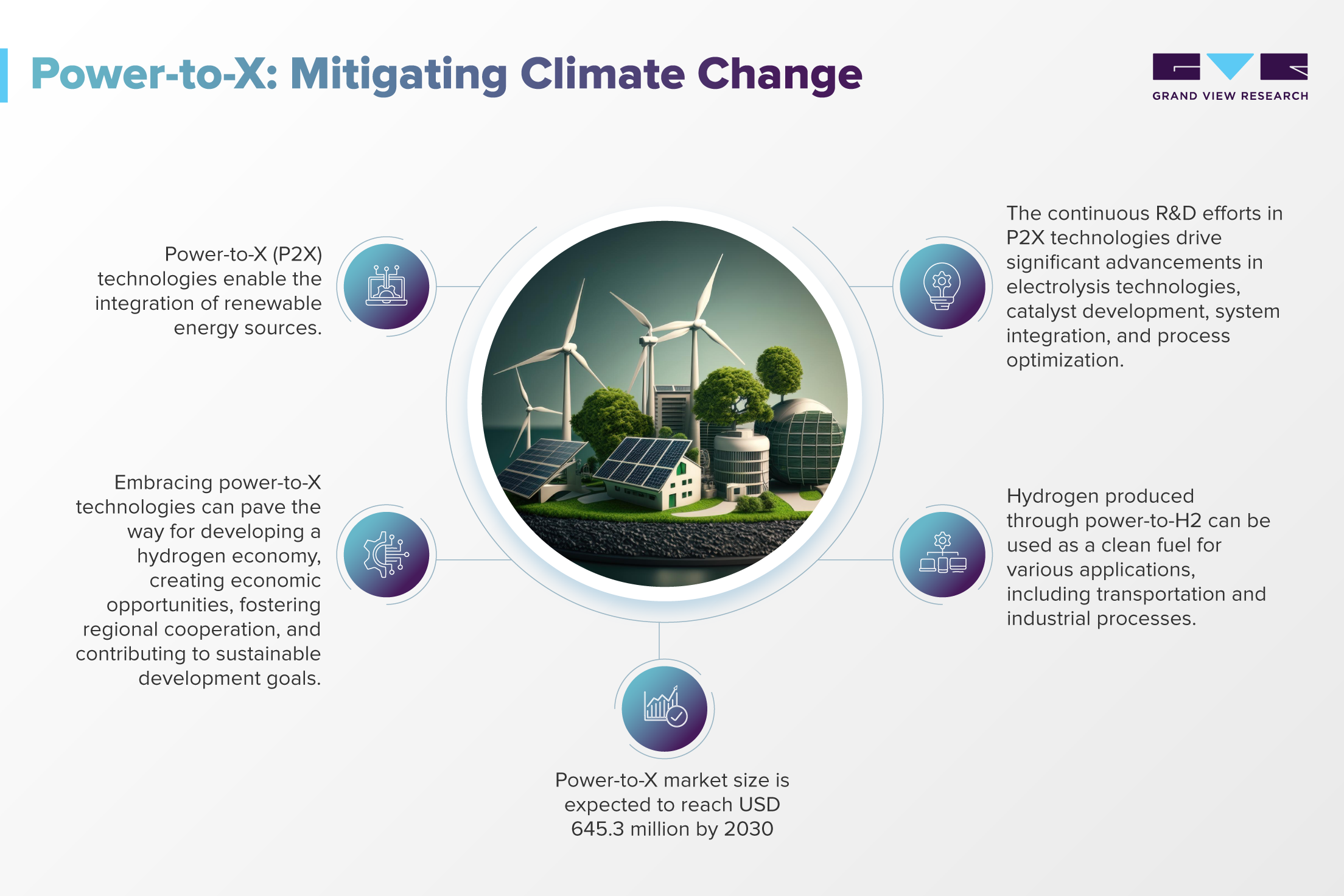The ‘X-traordinary’ Challenges of Electricity: Cracking the Code of Power-to-X!
In the pursuit of a more sustainable and cleaner future of energy, numerous ground-breaking technologies are paving the way for a radical transformation. One such advancement taking center stage is Power-to-X (P2X). This advanced concept can potentially restructure how we produce, store, and deploy energy. P2X technology involves the conversion of electricity from renewable sources including wind, solar, or water as primary energy into an energy carrier (‘X’). P2X facilitates the storage of surplus energy for future usage, while also managing energy fluctuations. These solutions deliver a resourceful alternative to the cutback of power generation during surplus production. Apart from optimizing the supply and demand balance, P2X solutions also present the opportunity to limit CO2 emissions.
In this blog, we will be delving into the world of Power-to-X technologies, unlocking their significance, different applications, key trends, and the promise it portrays for a greener world in the future.
Types of Power-to-X Technologies:
P2X technologies can be subdivided based on the intended usage or form of energy.
P2X Technologies by Usage:
- Power-to-Fuel
- Power-to-Ammonia
- Power-to-Chemicals
- Power-to-Power
- Power-to-Protein
- Power-to-Syngas
P2X Technologies by Energy Form:
- Power-to-Heat
- Power-to-Gas
- Power-to-Liquid
The Different Facets of Power-to-X:
- Power-to-Hydrogen (P2H2): With the help of electrolysis, water molecules are split into hydrogen and oxygen consuming surplus electricity. Hydrogen, an adaptable and sustainable fuel, can be stored and utilized across diverse applications, from transportation to industrial uses.
- Power-to-Methane (P2CH4): In this process, carbon dioxide and hydrogen are combined for producing synthetic methane. This clean gas is then stockpiled in natural gas existing facilities and employed for power generation, heating, and as a fuel source.
- Power-to-Ammonia (P2NH3): Ammonia can be synthesized by combining nitrogen from the air and hydrogen produced via electrolysis. Ammonia serves as a clean fuel and plays an important role in the production of fertilizers, contributing to agricultural sustainability.

Key Trends in the Industry X-plained:
- Hydrogen Economy: The emphasis on hydrogen as a clean energy carrier resulted in a remarkable potential for P2H2 technologies. In recent years, green hydrogen production from renewable electricity is gaining traction as an alternative to conventional methods of hydrogen production.
- Carbon Capture and Utilization (CCU): P2X technologies enable the capture and usage of CO2 from industrial process emissions. By integrating CO2 with hydrogen, synthetic fuels such as methane can be produced, thereby curtailing the overall carbon emissions.
- Sector Integration: P2X technologies have the potential to leverage different sectors of the economy. For instance, green hydrogen can be deployed not only for electricity generation but also in sectors including transportation, heating, and industrial usage, creating a more holistic approach to sustainability.
- Increase in Investments: Governments and private sector players across the world are intensifying their investments in P2X R&D and deployment. Supportive policies and incentives are being introduced for encouraging the adoption of these technologies and markets.
- Innovation in Electrolysis: Electrolysis, a vital aspect of P2X processes, is tremendously witnessing advancements in terms of efficiency, scalability, and cost reduction. Innovative materials and engineering techniques are being reinforced for making electrolysis more feasible.
- Circular Economy: P2X technologies align with the concept of circular economy by using excess resources or waste from different industries. For instance, CO2 emitted from industrial processes can be captured and used for developing valuable products.
- Global Partnerships: International collaborations and partnerships are emerging to propel the development and deployment of P2X technologies. Harnessing knowledge, resources, and best practices drives progress on a global scale.
- Demonstration Projects: Large-scale P2X demonstration projects are being commenced to prove the scalability and viability of these technologies. These projects deliver essential data and insights for refining & optimizing P2X processes.
- Public Awareness & Education: As P2X technologies are relatively new, public awareness and education efforts are proliferating to assist individuals in understanding their importance in attaining sustainable energy and limiting greenhouse gas emissions.
Challenges and Future Prospects:
While the opportunities for P2X are enormous, certain bottlenecks including heavy upfront costs, challenges in scaling up production, and keeping pace with technological innovations need to be catered to. Nonetheless, the ever-evolving R&D activities, paired with surging investments and favorable government policies, are laying the foundations for a prosperous future. As the energy landscape progresses, P2X is projected to become a mainstay of the revolution toward more efficient and cleaner energy systems.
Conclusion:
P2X is not just another technology-focused advancement, it acts as a ray of hope for a more sustainable and greener world. By leveraging surplus electricity to create crucial resources including hydrogen, ammonia, and methane, the P2X technologies are revolutionizing the way we think about power generation and consumption. As we continue to explore the exceptional possibilities of P2X, we take a remarkable stride towards a future powered by renewable and clean sources, leaving a profound impact on both our environment and society as a whole.
To schedule a free market intelligence database demo, please complete the form below:
Service Guarantee
-
Insured Buying
This report has a service guarantee. We stand by our report quality.
-
Confidentiality
Your transaction & personal information is safe and secure.
-
Custom research service
Design an exclusive study to serve your research needs.
-
24/5 Research support
Get your queries resolved from an industry expert.